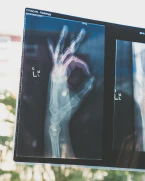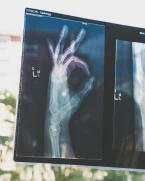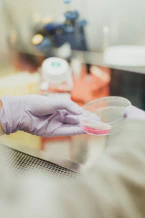Exploring Consciousness: Personal Experiences and Solutions for Overcoming Mental and Physical Barriers

My Experience of Being Fully Conscious While in a Coma
It’s not every day that you get to experience consciousness while in a coma. In fact, it’s a pretty rare occurrence. However, it happened to me, and it’s an experience that has stayed with me ever since.
While in a coma, I was fully aware of everything that was going on around me. I could hear the doctors and nurses talking, the beeping of machines, and the sound of my family members crying. I was also able to think and process information, even though I couldn’t move or communicate with anyone.
At first, I was confused and scared. I didn’t understand why I couldn’t move or speak, and I was worried that I was going to be stuck like that forever. However, as time went on, I began to accept my situation and focus on my thoughts.
During my time in the coma, I was able to reflect on my life and think about the things that were important to me. I thought about my family, my friends, and the experiences that had shaped me into the person I was. I also thought about the things that I still wanted to do in life and the goals that I had set for myself.
It’s hard to describe what it was like to be fully conscious while in a coma. It was a strange and surreal experience, and it’s something that I wouldn’t wish on anyone. However, it was also a powerful reminder of the toughness of the human spirit and the importance of staying connected to the things that matter most in life.
In the end, I was fortunate enough to come out of the coma and return to my normal life. However, the experience has stayed with me and continues to shape the way that I think about life and the world around me.
The Fragility of Consciousness in Our Planet
Consciousness is one of the most precious and fragile resources of human life. It allows us to experience the world around us, to learn, to communicate, and to create. However, in recent years, consciousness has been under threat on our planet in ways that we have never seen before.
From environmental destruction to the rise of digital distractions, our modern world is constantly eroding our ability to focus and be present. We are bombarded with endless stimuli, and our attention is pulled in a million different directions. We are losing touch with the natural world and with ourselves.
Moreover, the COVID-19 pandemic has brought to light the importance of mental health and the need for human connection. The isolation and loneliness experienced by so many during this time have highlighted the essential role that consciousness and human connection play in our lives.
It is up to us to protect and care our consciousness, both individually and collectively. We must be mindful of the impact that our actions have on the environment, and take steps to preserve the natural world. We must also be intentional about creating space for stillness and reflection in our daily lives, and prioritize human connection over digital distractions.
Consciousness is a precious resource that we cannot afford to lose. It is up to us to take action to protect and preserve it for generations to come.
The Emergence of Consciousness in the Awash Valley
The Awash Valley in Ethiopia was the birthplace of the Human Show, where the first humans learned to grow their consciousness in response to global threats. This valley served as a rich source of food, water, and shelter, enabling humans to evolve and develop the cognitive and cultural skills needed to survive.
The development of consciousness allowed humans to think critically, communicate, and cooperate. They began to use tools and develop agriculture, which led to an explosion in population and human civilization. Humans learned to adapt to their environment and thrive, expanding their reach across the globe.
However, with the benefits of consciousness also came great challenges. Humans had to confront global threats, such as climate change, pandemics, and war. Consciousness, the very thing that allowed humans to thrive, was also the most fragile and unpredictable resource.
As we continue to navigate these challenges, we must remember the lessons learned in the Awash Valley. We must grow our consciousness and develop the cognitive and cultural skills necessary to thrive in an ever-changing world.
Gaps between Potential Mind and Actual Mind
Depression and concussions are just some of the sources of gaps between potential mind and actual mind. These gaps can manifest in various ways, such as forgetfulness, lack of concentration, and difficulty with problem-solving. They can also lead to a feeling of disconnection from oneself and the world around us.
Depression, for example, can make it hard to concentrate or feel motivated to do anything. It can also cause forgetfulness and difficulty with problem-solving. Concussions, on the other hand, can cause memory loss and difficulty with focus and concentration.
These gaps between potential mind and actual mind can be frustrating and limiting. However, it is important to remember that there are ways to overcome them. Seeking professional help, such as therapy or medical treatment, can be helpful in managing these issues.
It is also important to take care of ourselves by getting enough rest, eating a healthy diet, and engaging in regular exercise. These practices can help improve our overall brain function and minimize the impact of potential sources of mind gaps.
By being aware of the sources and effects of mind gaps, we can take steps to overcome them and reach our full potential.
India’s Head Injury Crisis and the Struggle for Long-Term Healthcare Perspective
India has been labeled as the head injury capital of the world, and the healthcare system lacks long-term perspective to address this growing issue. This sad distinction has resulted from the country’s poor road safety infrastructure, a lack of helmet usage, and the rise of extreme sports. In addition, the healthcare system often fails to provide adequate care for patients with head injuries.
The lack of a long-term perspective in healthcare is a major concern in India. This often results in patients being discharged from hospitals without being provided with the necessary care and support to recover fully. This situation is further complicated by the fact that many patients do not have access to appropriate rehabilitation services.
To address this issue, there needs to be a shift in focus towards providing long-term care and rehabilitation for patients with head injuries. This requires a change in mindset from the current focus on short-term solutions. It also requires the development of more specialized facilities that can provide the necessary care and support for patients with head injuries.
In conclusion, the head injury crisis in India is a serious issue that needs to be addressed urgently. The healthcare system needs to adopt a long-term perspective to provide patients with the care and support they need to recover fully. Only then can we hope to reduce the incidence of head injuries and improve the quality of life for those who have suffered from them.
Finding Solutions for Recovery: The Importance of Cognitive Training and Addressing Muscular-Skeletal Imbalance
Recovery from a traumatic injury or illness can be a difficult journey, but finding solutions that work for you can make all the difference. As the speaker shared in their personal experience, cognitive training and addressing muscular-skeletal imbalance were crucial in their recovery.
Cognitive training involves exercises and activities that improve cognitive abilities such as memory, attention, and problem-solving. These exercises can help the brain to adapt and rewire itself after an injury. Additionally, addressing muscular-skeletal imbalances, such as muscle weakness or poor posture, can improve overall physical function and prevent future injuries.
It’s important to note that finding the right solutions for recovery is not a one-size-fits-all approach. What worked for one person may not work for another, so it’s essential to work closely with a healthcare professional and develop a personalized plan for recovery.
Recovery can be a long and challenging process, but with the right tools and support, it’s possible to overcome even the most significant obstacles. Remember to stay positive, take things one day at a time, and celebrate every small victory along the way.
Repositioning the Jaw and Aligning Teeth: A Solution to Migraine Headaches
During their recovery journey, the speaker discovered that their migraine headaches could be resolved through repositioning the jaw and aligning the teeth. This was a surprising revelation, as many people believe that migraines are solely caused by neurological factors.
The speaker’s experience is not unique, as studies have shown that there is a connection between dental occlusion (the way teeth fit together) and migraine headaches. Dental occlusion issues can cause tension in the head and neck muscles, leading to headaches.
By addressing the root cause of their migraines, the speaker was able to find a solution that worked for them. Through repositioning the jaw and aligning the teeth, the speaker found relief from their migraines and was able to improve their overall quality of life.
It is important to note that not all migraines are caused by dental occlusion issues, and individuals should consult with their healthcare provider to determine the best course of treatment for their specific situation. However, for those whose migraines are caused by dental occlusion, repositioning the jaw and aligning the teeth may be a viable solution.
The Critical Importance of Communication in Consciousness
Effective communication is essential in all aspects of consciousness, from physical movement to mental well-being. As someone who has personally experienced the gaps between potential mind and actual mind, I can attest to the importance of finding solutions that work for you.
One such solution is an innovative device that can help bridge gaps in movement for the paralyzed. By using a system of electrodes implanted in the brain, the device can read the signals associated with movement and translate them into commands that can be used to control prosthetic limbs or other assistive devices.
But communication goes beyond just movement. It also encompasses the mental and emotional aspects of consciousness. During my own recovery, cognitive training and addressing muscular-skeletal imbalances proved to be effective tools for improving mental clarity and reducing depression.
Another example of the importance of communication in consciousness is how repositioning the jaw and aligning the teeth can resolve migraine headaches. By addressing the physical alignment of the jaw, we can improve communication between the brain and the rest of the body, leading to better overall health and well-being.
In conclusion, the critical importance of communication in consciousness cannot be overstated. Whether it’s through innovative devices, cognitive training, or addressing physical imbalances, finding effective solutions that work for you is key to improving your quality of life.
Conclusion
Consciousness is a remarkable and fragile resource that we must protect and care. Whether it is through addressing issues like depression and concussions or finding innovative solutions to help the paralyzed, it is clear that communication is vital to unlocking the full potential of our minds. From the origins of human consciousness in Ethiopia’s Awash Valley to the cutting-edge technologies being developed today, we must continue to push the boundaries of what we know and what we can do. By hugging a mindset of curiosity and openness, we can ensure that our minds continue to grow and evolve, unlocking new depths of creativity, toughness, and possibility. So let’s keep exploring the mysteries of the mind and find new ways to release its potential for the benefit of all.















